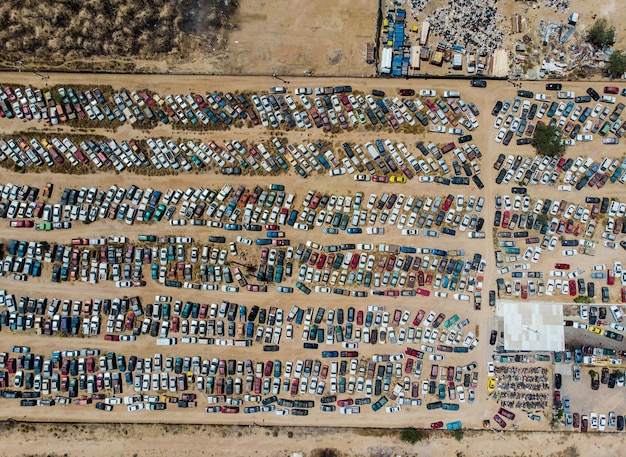The Impact of US Foreign Policy on International Aid Organizations

The Impact of US Foreign Policy on International Aid Organizations: An Analysis of the Current Landscape reveals how US foreign policy decisions, including funding allocations and regulatory frameworks, profoundly shape the operations, effectiveness, and scope of international aid organizations.
Navigating the complex realm of international aid requires understanding the significant influence of governmental policies. This article delves into the impact of US foreign policy on international aid organizations: an analysis of the current landscape, shedding light on the multifaceted ways in which these policies affect the work and efficacy of these crucial entities.
Understanding US Foreign Policy and Aid
US foreign policy operates on multiple levels, influencing international aid organizations through direct funding, legislative mandates, and broader diplomatic strategies. Understanding these elements is crucial for grasping the full scope of their impact.
Direct Funding and Allocations
One of the primary ways US foreign policy affects aid organizations is through direct financial support. The US government, via agencies like USAID, allocates substantial funds to various international aid programs, which can significantly boost the operational capacity of these organizations.
However, this funding is often tied to specific policy goals and priorities, shaping the focus of aid efforts and potentially limiting the autonomy of aid organizations.
Legislative Influence on Aid
Legislation passed by the US Congress also plays a vital role. Acts such as the Foreign Assistance Act set the framework for US involvement in international development and assistance. These legislative mandates can dictate where aid can be directed and what conditions must be met.
- Legislative mandates can introduce restrictions on aid to countries with certain political or human rights records.
- The allocation of funds can shift based on political considerations and strategic interests.
- Regulatory frameworks can impose reporting and compliance requirements on aid organizations receiving US funding.

In conclusion, understanding the mechanisms through which US foreign policy channels aid helps to explain the constraints and opportunities faced by international aid organizations. These mechanisms significantly dictate the reach and nature of aid initiatives, reflecting US global strategic interests.
The Impact on Humanitarian Aid
Humanitarian aid, intended to alleviate suffering during crises, is inevitably shaped by US foreign policy. Political considerations and strategic priorities can affect the delivery and effectiveness of such aid.
Political Factors in Aid Distribution
US foreign policy can influence which regions receive humanitarian assistance and how quickly it is provided. Political allies may receive preferential treatment, while countries in conflict or disfavor may face delays or reduced aid.
This selectivity can affect the impartiality and perceived neutrality of aid organizations, potentially jeopardizing their access to vulnerable populations.
Strategic Interests and Aid Effectiveness
The effectiveness of humanitarian aid can be compromised when it is used as a tool to achieve broader strategic goals. For example, aid may be conditioned on political reforms or economic liberalization, which can undermine local ownership and long-term sustainability.
- Geopolitical considerations often determine the allocation of resources during humanitarian crises.
- Aid may be used to promote US values and interests, which can clash with local needs and priorities.
- Conditional aid can lead to resentment and distrust among recipient populations.
In essence, the intersection of humanitarian aid and US foreign policy requires careful navigation. The potential for political and strategic agendas to overshadow the core principles of humanitarianism poses ongoing challenges for aid organizations striving to maintain neutrality and effectiveness.
Development Aid and Long-Term Impacts
Development aid, designed to foster sustainable growth and reduce poverty, is also profoundly affected by US foreign policy. The conditions and priorities attached to this aid can shape long-term development outcomes.

Conditionality of Aid and Local Ownership
US foreign policy often ties development aid to specific conditions, such as economic reforms, governance improvements, and human rights standards. While the intention may be to promote positive change, these conditions can undermine local ownership and create dependency.
Local communities and governments may feel compelled to adopt policies that align with US priorities but do not necessarily reflect their own needs and aspirations.
Priorities and Sustainable Development
The priorities of US foreign policy can influence the types of development projects that receive funding. Investments in infrastructure, education, or healthcare may shift based on political considerations rather than evidence-based assessments of local needs.
- Short-term political goals can overshadow the long-term sustainability of development initiatives.
- A focus on economic liberalization can lead to the privatization of essential services, affecting access for the poor.
- Aid may be concentrated in sectors that benefit US companies, rather than those that address the root causes of poverty.
In summary, the long-term impacts of development aid are closely linked to the policies and priorities of the donor country. Ensuring that aid is aligned with local needs, fosters local ownership, and promotes sustainable development requires a commitment to genuine partnership and mutual respect.
The Role of NGOs in Navigating US Policy
Non-governmental organizations (NGOs) play a crucial role in delivering aid and advocating for policy changes. They must navigate the complexities of US foreign policy while striving to maintain their independence and effectiveness.
Balancing Funding and Independence
Many NGOs rely on US government funding to support their operations. However, accepting this funding can come with conditions and restrictions that may compromise their independence and neutrality.
NGOs must carefully balance their financial needs with their commitment to their mission and values. Diversifying funding sources and advocating for policy changes can help maintain their autonomy.
Advocacy and Policy Influence
NGOs can influence US foreign policy through advocacy and public education. By sharing their experiences and expertise, they can raise awareness about the impacts of policy decisions on vulnerable populations.
- NGOs can lobby policymakers to promote more effective and equitable aid policies.
- They can collaborate with other organizations to amplify their voices and increase their impact.
- Public campaigns can mobilize support for policy changes and hold governments accountable.
In conclusion, NGOs serve as vital intermediaries between US foreign policy and the communities they serve. Their ability to balance funding, maintain independence, and advocate for policy changes is essential for ensuring that aid reaches those who need it most and contributes to sustainable development.
Case Studies: US Policy in Action
Examining specific cases can illustrate the concrete effects of US foreign policy on international aid organizations. These examples highlight the challenges and opportunities that arise in different contexts.
Aid to Post-Conflict Zones
US foreign policy in post-conflict zones often involves a mix of humanitarian assistance, development aid, and security initiatives. While the intention may be to promote stability and reconstruction, these efforts can be complicated by political dynamics and conflicting priorities.
Aid organizations working in these environments must navigate complex security concerns and political sensitivities. They may face pressure to align with US strategic goals, which can undermine their neutrality and access to vulnerable populations.
Aid in Authoritarian Regimes
Providing aid in authoritarian regimes presents ethical and operational challenges. US foreign policy may restrict aid to governments with poor human rights records, but cutting off aid can also harm the people who need it most.
- Aid organizations must balance their commitment to human rights with their desire to alleviate suffering.
- They may need to work through local NGOs or community groups to reach vulnerable populations without legitimizing the government.
- Advocacy for policy changes can help create more flexible and nuanced approaches to aid in these contexts.
In essence, case studies provide valuable insights into the real-world implications of US foreign policy on international aid. Learning from these experiences can help improve the effectiveness and impact of aid efforts in diverse and challenging environments.
Future Trends and Challenges
Looking ahead, several trends and challenges will shape the relationship between US foreign policy and international aid organizations. Adapting to these changes will be crucial for ensuring that aid remains effective and responsive to global needs.
The Rise of New Aid Donors
The emergence of new aid donors, such as China and other emerging economies, is changing the landscape of international development. These new donors often have different priorities and approaches, which can challenge the dominance of traditional Western donors.
Aid organizations must adapt to this changing environment by diversifying their funding sources and engaging with a broader range of actors. Collaboration and knowledge-sharing can help improve the overall effectiveness of aid efforts.
Climate Change and Humanitarian Crises
Climate change is exacerbating humanitarian crises, increasing the need for aid and challenging the capacity of aid organizations. US foreign policy must address the root causes of climate change and provide support for adaptation and resilience-building in vulnerable regions.
- Aid organizations need to integrate climate considerations into their programs and operations.
- Innovation and technology can help improve the efficiency and effectiveness of aid delivery in the face of climate-related disasters.
- Advocacy for policy changes is essential to promote sustainable development and reduce vulnerability to climate change.
In conclusion, the future of international aid will depend on the ability of organizations and policymakers to adapt to new challenges and opportunities. By embracing innovation, fostering collaboration, and prioritizing sustainability, the global community can work together to create a more equitable and resilient world.
| Key Point | Brief Description |
|---|---|
| 🌍 US Funding Impact | US funding conditions influence aid organizations’ autonomy and focus. |
| 🤝 NGO’s Role | NGOs balance funding with independence, advocating for effective policy changes. |
| 🌱 Development Focus | Priorities in development aid affect sustainability and local ownership of projects. |
| ⚖️ Humanitarian Aid | Strategic interests can overshadow humanitarian principles, affecting aid delivery. |
Frequently Asked Questions (FAQ)
▼
US foreign policy dictates which countries and sectors receive funding, often aligning with US strategic goals. This can affect the autonomy and focus of aid organizations.
▼
NGOs often balance accepting US funding with advocating for policy changes. They strive to maintain independence while delivering essential aid to vulnerable populations.
▼
Political allies tend to receive preferential treatment, while countries in conflict or disfavor may experience delays or reduced aid, influencing impartiality.
▼
Balancing human rights concerns with the need to alleviate suffering presents ethical dilemmas. Aid organizations must work through local groups to reach those in need.
▼
Climate change exacerbates crises, increasing the demand for aid. Organizations must integrate climate considerations into their programs to build resilience effectively.
Conclusion
Understanding the impact of US foreign policy on international aid organizations is crucial for promoting more effective, equitable, and sustainable aid practices. By addressing the challenges and embracing opportunities for collaboration and innovation, we can work towards a more just and resilient world.





